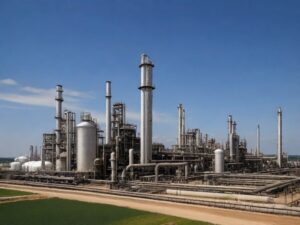As the world becomes more technologically advanced, the need for safety in industrial environments has never been more critical. This is where Intrinsically Safe Systems come into play. These systems, offered by companies like the Intrinsically Safe Store, are designed to prevent sparks or heat that could ignite flammable or explosive materials. But how do these systems impact plant layout and design? Let’s delve into this topic.
Understanding Intrinsically Safe Systems
Designers create Intrinsically Safe Systems to limit the available energy, both electrical and thermal, for ignition. These systems find their use in hazardous areas where flammable gases, vapors, or dust are present. These systems are not just about the devices but also about the wiring and interconnected equipment. Designers create them to prevent the release of sufficient energy that could ignite the flammable material.
Impact on Plant Layout and Design
The implementation of Intrinsically Safe Systems has a significant impact on plant layout and design. Here are some key areas:
- Space Planning: Intrinsically safe equipment is typically smaller than its non-intrinsically safe counterparts. This can lead to more efficient use of space and potentially reduce the size of the plant.
- Wiring: Intrinsically safe systems require specific wiring methods to prevent ignition. This can affect the design of the electrical system and the layout of the plant.
- Equipment Placement: The placement of equipment can be more flexible with intrinsically safe systems, as there is less risk of ignition. This can lead to more efficient plant layouts.
Case Study: Petrochemical Plant
A petrochemical plant in Texas, USA, provides a compelling example of the impact of intrinsically safe systems on plant layout and design. They initially designed the plant using traditional explosion-proof methods. However, after a safety review, it was decided to switch to intrinsically safe systems. This led to a significant reduction in the plant’s size, more efficient use of space, and a safer working environment.

Statistics on Intrinsically Safe Systems
Markets and Markets’ report anticipates that the global market for intrinsically safe equipment will grow from USD 2.2 billion in 2020 to USD 3.4 billion by 2025, at a CAGR of 7.8%. The increasing emphasis on industrial safety and the advantages of intrinsically safe systems, such as lower installation costs and more flexible equipment placement, drive this growth.
Intrinsically Safe Systems: Shaping Plant Layout and Design
Intrinsically Safe Systems have a significant impact on plant layout and design. They can lead to more efficient use of space, more flexible equipment placement, and safer working environments. As the demand for industrial safety continues to grow, it’s clear that intrinsically safe systems will play an increasingly important role in plant design.
If you’re interested in learning more about Intrinsically Safe Systems, visit the Intrinsically Safe Store. We offer a wide range of intrinsically safe equipment and can provide expert advice on implementing these systems in your plant. Don’t hesitate to contact us for more information.


